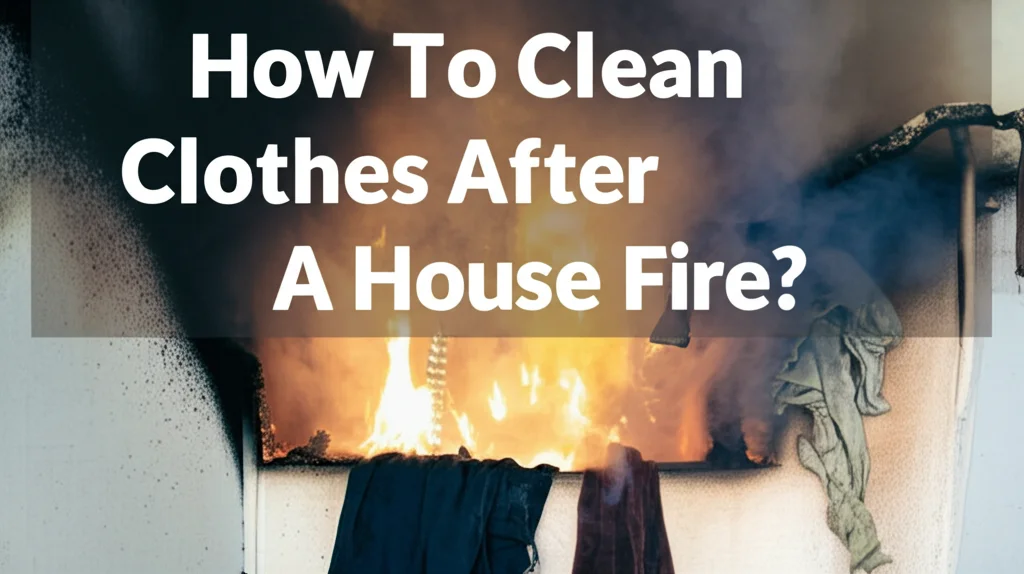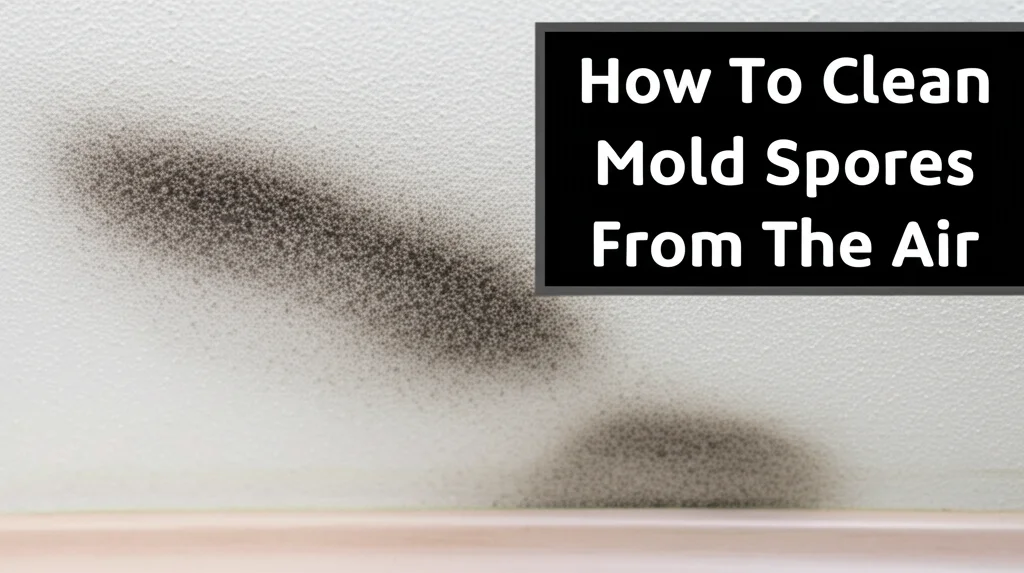· Home & Cleaning · 7 min read
How To Clean Clothes After A House Fire?

Cleaning Clothes After a House Fire: A Step-by-Step Guide
Dealing with the aftermath of a house fire is incredibly stressful. Beyond the structural damage, your personal belongings, including your clothes, often suffer from smoke and soot contamination. Can you salvage your wardrobe? Absolutely, but it requires a specific approach. This article will guide you through how to clean clothes after a house fire, ensuring safety and maximizing restoration. We’ll cover everything from initial assessment to washing techniques and when to call in professionals.
Takeaway:
- Don’t wash contaminated clothes with unaffected items. This prevents spreading soot and odors.
- Pre-treat heavily soiled items. Removing loose soot before washing is crucial.
- Use a specialized detergent. Designed for smoke and odor removal, these detergents are more effective.
- Air dry clothes. Heat can set in smoke odors.
Can you wash clothes after a fire?
Yes, you can often wash clothes after a fire, but it depends on the extent of the damage. Lightly soiled items can usually be restored with proper cleaning techniques. However, heavily damaged clothes may require professional restoration or may be unsalvageable.
1. Assessing the Damage: What to Do Immediately
The first step after a fire is to assess the damage to your clothing. Don’t rush into washing everything at once. Take a deep breath and systematically evaluate each item. This initial assessment will determine the best course of action for each piece. Remember, safety is paramount – wear gloves and a mask during this process to avoid inhaling soot particles.
- Separate Contaminated Items: Immediately separate clothes affected by the fire from clean items. Place contaminated clothing in sealed plastic bags to prevent further spread of soot and odors.
- Document Everything: Take photos of the damage for insurance purposes. Detailed documentation will be helpful when filing claims.
- Check for Heat Damage: Examine clothes for melting, charring, or other signs of heat damage. Items with significant heat damage are likely beyond repair.
- Identify Fabric Types: Different fabrics require different cleaning methods. Note the fabric composition of each item (cotton, polyester, silk, etc.).
2. Pre-Treatment: Removing Loose Soot and Debris
Before you even think about washing, pre-treating your clothes is essential. Washing clothes with loose soot will only spread the contamination and make the problem worse. This step focuses on removing as much dry particulate matter as possible.
- Dry Brush: Use a soft-bristled brush (like a garment brush) to gently brush off loose soot and debris. Brush away from the fabric to avoid pushing the soot deeper.
- Vacuuming: Use a vacuum cleaner with an upholstery attachment to carefully vacuum each garment. This is particularly effective for removing soot from textured fabrics. Consider using a vacuum with a HEPA filter to trap fine particles.
- Dry Cleaning Solvent Spot Test: For stubborn soot stains, test a small, inconspicuous area with a dry cleaning solvent. Follow the solvent’s instructions carefully. If the solvent damages the fabric, discontinue use.
- Avoid Water Initially: Do not use water at this stage. Water can set the soot and make it harder to remove.
3. Choosing the Right Laundry Detergent
Selecting the right detergent is crucial for effectively cleaning clothes after a fire. Regular laundry detergents often aren’t strong enough to tackle smoke and soot odors. You need a detergent specifically formulated for these types of contaminants.
- Specialized Smoke & Odor Detergents: Look for detergents specifically designed to remove smoke and odor. These detergents contain enzymes and surfactants that break down soot and neutralize odors.
- Enzyme-Based Detergents: Enzyme-based detergents are effective at breaking down organic compounds found in smoke residue.
- Borax Booster: Adding 1/2 cup of borax to your wash cycle can help boost the cleaning power of your detergent and neutralize odors. You can find more information on using borax for cleaning here.
- Avoid Bleach (Initially): While bleach can disinfect, it can also set some stains and damage certain fabrics. Avoid using bleach in the initial wash cycle.
4. Washing Techniques: A Detailed Approach
Now it’s time to wash your clothes. However, it’s not as simple as throwing everything in the machine. Follow these techniques for optimal results.
- Wash Separately: Wash contaminated clothes separately from all other laundry. This prevents the spread of soot and odors.
- Cold Water Wash: Use cold water for washing. Hot water can set smoke odors into the fabric.
- Extra Rinse Cycle: Add an extra rinse cycle to ensure all detergent and loosened soot are removed.
- Vinegar Rinse: Add 1 cup of white vinegar to the final rinse cycle. Vinegar helps neutralize odors and soften fabrics. You can learn more about using vinegar for cleaning here.
- Load Size: Wash smaller loads to allow for more thorough cleaning and rinsing.
5. Drying Your Clothes: Air Drying is Key
How you dry your clothes is just as important as how you wash them. Heat can permanently set smoke odors into the fabric, rendering your efforts useless.
- Air Dry Only: Air dry all clothes affected by the fire. Hang them outside in fresh air if possible.
- Avoid the Dryer: Do not use a clothes dryer until you are absolutely certain all smoke odors are gone.
- Sunlight Exposure: Sunlight has natural deodorizing properties. Hanging clothes in direct sunlight can help remove lingering odors.
- Check for Odors: Before bringing clothes indoors, sniff them carefully to ensure the smoke odor is gone. If the odor persists, repeat the washing process.
6. When to Call a Professional Restoration Service
Sometimes, DIY cleaning isn’t enough. Heavily damaged or delicate items may require professional restoration. Knowing when to call in the experts can save you time, money, and frustration.
- Delicate Fabrics: Silk, wool, and other delicate fabrics are best left to professional cleaners.
- Extensive Damage: If clothes are heavily soiled or have significant heat damage, professional restoration is recommended.
- Persistent Odors: If you’ve tried multiple washing cycles and the smoke odor persists, a professional may have access to specialized cleaning techniques.
- Insurance Claims: Your insurance company may require professional cleaning for certain items to be covered.
FAQ: Common Questions About Cleaning Clothes After a Fire
Q: Can I use fabric softener after a fire? A: It’s best to avoid fabric softener initially. Fabric softener can coat fibers and trap odors. Once the smoke odor is completely removed, you can resume using fabric softener.
Q: What about dry-clean-only clothes? A: Take dry-clean-only items to a professional dry cleaner specializing in fire restoration. They have the equipment and expertise to safely clean these delicate garments.
Q: How long does it take to remove smoke odor from clothes? A: It varies depending on the severity of the contamination. Lightly soiled items may be restored with one or two washes, while heavily soiled items may require multiple attempts or professional cleaning.
Q: Can I use baking soda to help remove odors? A: Yes, baking soda is a natural odor absorber. You can add 1/2 cup of baking soda to the wash cycle or place an open box of baking soda near the drying clothes. You can also learn how to remove baking soda residue here.
Conclusion: Restoring Your Wardrobe After Loss
Cleaning clothes after a house fire is a challenging but often achievable task. By following these steps – assessing the damage, pre-treating effectively, using the right detergents, and employing proper washing and drying techniques – you can significantly increase your chances of restoring your wardrobe. Remember to prioritize safety, be patient, and don’t hesitate to seek professional help when needed. Recovering from a fire is a long process, but restoring your belongings can be a small step towards rebuilding your life. Don’t let smoke and soot define your future; take control and reclaim your clothes.




